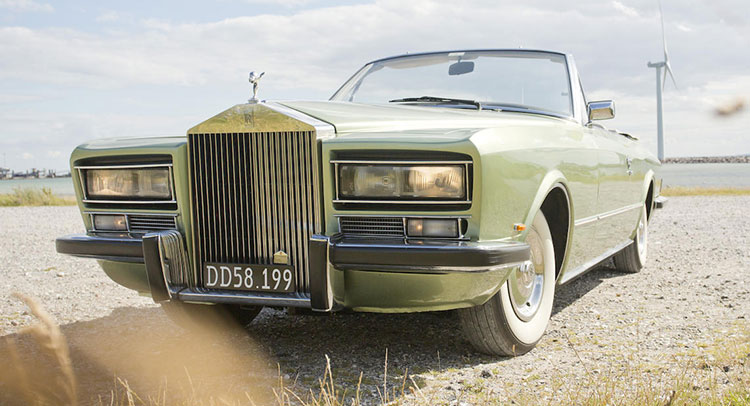Although we’ve seen our share of custom-built Rolls Royces – thanks to the British car manufacturer’s bespoke program, the cars weren’t “bespoke” in the true sense of the word. This, on the other hand…
Commissioning a stock-bodied car with some abnormal paint scheme and a few revised bits and pieces doesn’t make it really bespoke; more like customized. Sure, it very well depends on the level of individualism, but at the end of the day, you’ll pretty much end up with a regular car with a questionable paint-job – at best.
Constructing a bespoke model requires true uniqueness and most of these cars are coachbuilt. It’s like comparing the Rolls Royce Hyperion to a Phantom Drophead – no matter how hard you try to factory-customize the Drophead, it will still remain a Drophead.
So, here’s a Phantom VI that received a unique treatment from Pietro Frua. Frua was one of the leading Italian coachbuilders back in the ‘50s and ‘60s, which makes this 1973 Rolls Royce model even more desirable as the coachbuilder’s designs became rarer towards the end of his life.
Those familiar with the Phantom VI know that Rolls’ own model had a very conservative approach – in terms of design – and it wasn’t offered, by any means, as a cabriolet straight from the factory. In fact, from the 355 limousines ever constructed by Rolls Royce, only two were bodied by Frua – this and a red four-door convertible.
Sure, the car could have been built on the Corniche, but that wouldn’t have made it a true Phantom. Known as the PRX4705 chassis, it’s possibly one of the largest two-door convertible existing in the world today. In fact, it’s possible the largest two-door convertible ever built – yes, longer than a Bugatti Royale Weinberger.
The automobile was commissioned by Consul Simon van Kempen of Switzerland and Monaco and it took a full two years to complete. The process was delayed due to the Italian-English language barrier between Frua and Rolls-Royce, as the car’s dimensions were measured in inches as opposed to the metric system the Italians have grown accustomed to. Moreover, Rolls Royce has given an incorrect wheelbase figure in all publications, the car being 1 inch too short. That’s 25,4 mm.
To make matters even harder for the coachbuilder, the customer decided in the middle of the build that he wanted the classic Rolls Royce radiator unobstructed by the front bumper (as opposed to Frua’s original design). Moreover, as delays mounted, subtle design cues – the door locks and other bits and pieces – were sourced from Mercedes Benz, ending up with the Consul threatening to cancel the project.
However, as you can see, the car was successfully completed and it remains one of the rarest examples of automobiles governed by the Spirit of Ecstasy. The combination of its stunning style and presence, coupled with Frua’s design makes it a highly valuable car. That’s why Bonhams is offering it for sale at an estimated auction price between $307,000 and $383,000.
























